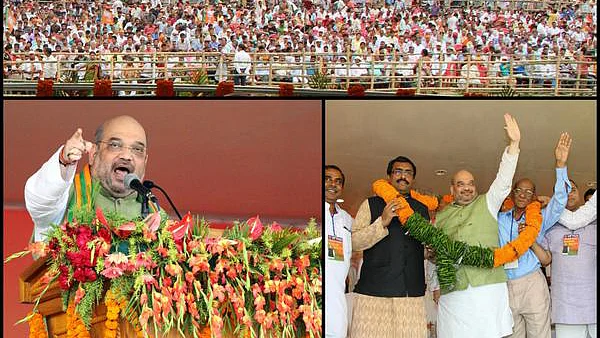The north eastern region (NER) is of immense diversity – ethnic, cultural and ecological. Geographically, it comprises less than 10% of India’s land mass, but its geo-strategic importance far exceeds its territorial area.
The eight states that comprise this region share close to 5,000 kms of international border with Nepal, Bhutan, China, Myanmar and Bangladesh. A narrow corridor at Siliguri (between 20 to 40 kms) connects it with the rest of India.
The Nehruvian approach viewed the region as a buffer zone for security between India and China. The BJP’s approach towards the northeast marks a clear departure from this.
The BJP envisions an integrated approach to ensure economic and emotional integration of the region with the rest of India. Enhanced road, rail and air connectivity as well as deeper regional and cross border economic engagement are key components of this policy.Approve
DONER Created
Under Prime Minister Atal Bihari Vajpayee, the departure from a security-centric approach, towards a development driven approach, was put into practice. In September 2001, the Vajpayee government created a separate department of Development of North-Eastern Region (DONER). A 10% non-lapsable fund from the budget of each ministry was earmarked for expenditure in the region even as all the NE states, including Sikkim, were categorised as special category states.
Between 1998 and 2004, to improve connectivity, the national highway network upto Silchar through the East-West Corridor and the rail network upto Imphal were extended. The potential of hydro power generation was recognised while the New Exploration and Licensing Policy (NELP) extended to states like Mizoram, Nagaland, Tripura and Assam.
In December 2002, the North-Eastern Council (NEC) Act, 1971, was amended to reinvigorate its structure and also include Sikkim as the eighth member. It was empowered akin to a regional planning body. Subsequently, 12 airports were upgraded with the NEC sharing 60% of the costs and over a 1,000 kms of roads were completed under it.
Issue of Borders
In January 2004, to focus on issues relating to management of international land and coastal borders, a Department of Border Management was created within the Ministry of Home Affairs. Assam Rifles was brought under the Home Ministry and was entrusted the overall responsibility of manning the Indo-Myanmar border. Fencing of the Bangladesh border was given impetus.
Vajpayee regarded the northeast as a gateway to South-East Asia and the BJP-NDA government focused on economic empowerment of the region through job creation, energy security, connectivity and trade with neighbouring countries.
A decade later, during the 2014 Lok Sabha campaign, then prime ministerial candidate Narendra Modi committed that the BJP would lay further emphasis on developing the entire eastern and northeastern regions. This promise resonated and the BJP on its own won eight of the 24 seats in this region.
Modi included two ministers from the region in his team and announced a slew of measures to boost development. These include making the region an organic hub of agriculture and horticulture production and establishing six new agriculture universities. Additionally, a sports university in Manipur and improved 2G, 3G and 4G connectivity for the region are in the pipeline.
From ‘Look’ to ‘Act’
Under Modi, the Congress-UPA’s “Look East” policy has transformed into a more vibrant “Act East” Policy. The recent bilateral visit to Bangladesh brings closure to a long overdue land boundary agreement. Several other agreements promise to unleash enormous trade benefits to the region.
Recently, BJP President Amit Shah undertook a visit to every one of the eight north eastern states. He addressed public meetings, the media and met with representatives from various social and religious organisations to share details about the governments’ initiatives and the party’s promise of good governance. The party is working towards building political roots in the entire region.
Additionally, the BJP has always stood for a more proactive stance with regard to the problems of insurgency and illegal immigration plaguing the region. The central government has provided Assam Rs1,400 million to update the citizens’ register and identify illegal immigrants from Bangladesh.
The Manipur Heartache
On June 4, the Indian army suffered its worst ambush in two decades in Manipur. Eighteen jawans were martyred and another eleven injured in an audacious attack by a combined front of militants.
The political and military response that followed was unparalleled in speed and scale. A joint operation by the Indian Army and Air Force had ace paratroopers wiping out two militant camps within Myanmar territory. This signalled India’s readiness to strike back beyond its borders.
The operation also confirms a twin approach adopted by the government – augmenting development without compromising security concerns. This augurs well for the region as a whole. With peace and development, the region can achieve its true potential.
(The writer is BJP’s national spokesperson and a Supreme Court advocate)
(At The Quint, we question everything. Play an active role in shaping our journalism by becoming a member today.)
